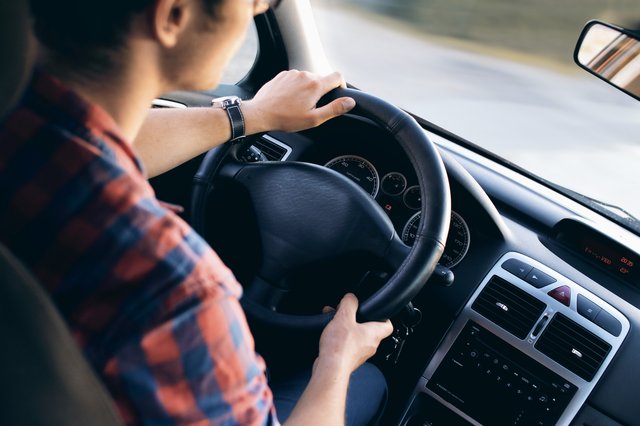
The freedom of the open road is calling your name—but are Driver ready for it?
Driving is a privilege many of us enjoy, but driving can be intimidating if you’re just starting out. With so many cars and other drivers on the road, how can you stay safe?
If you’re a first-time driver, it’s normal to feel cautious about driving, especially on busy roads. To help you feel more prepared, keep reading to find ten car safety tips that will give you the confidence you need as a new driver.
-
Every First-Time Driver Should Know How to Drive in Bad Weather
One of our top safety tips is knowing how to drive in inclement weather. Rain, high winds, fog, and even snow are common in most parts of the country, and conditions can change quickly.
Before getting behind the wheel, make sure you’re confident driving in bad weather. A good rule of thumb, when weather changes, is to always slow down, put on your headlights, and leave plenty of distance between you and other cars.
It’s also ok to pull over and wait until conditions improve if you’re not comfortable driving.
-
Keep a Safe Distance from Other Vehicles to keep this mind to Driver
If you’re new to driving and wondering how to avoid car accidents, one of the easiest ways is to keep your distance. Never tailgate and always keep a safe distance from other cars ahead of you.
If drivers are too close to you, you may want to switch lanes. Remember that the faster you’re driving, the longer it will take you to stop, so highway driving requires extra care.
-
Stay Focused
Distracted driving can be deadly—when you’re not focused, you’re more likely to make mistakes.
Mobile phones are one of the biggest culprits, but there are plenty of other distractions in your car. These can include the radio, other passengers, or eating while driving.
If you want to drive safely, make sure you’re 100% focused on driving, not your phone.
-
Keep Your Insurance Documents in the Car
Hopefully, it will never happen, but you may find yourself in a car accident one day. If this happens, you’ll need to have your insurance documents with you in the car.
Ideally, all of your insurance information should be secure in your glovebox, so you can exchange details with the other driver.
You should also know what to do after a car accident as a driver. This includes moving the car to safety, calling the police, and getting medical care right away.
-
Don’t Neglect Regular Servicing
All drivers should look after their car to keep it safe on the road. A car that’s been maintained will last longer, get better gas mileage, and will be more reliable.
This should include oil changes, replacing tires, and checking fluid levels under the hood.
-
Learn How to Change a Tire
Do you know how to change a tire? While most of us have access to roadside assistance, it’s still important to know how to change a tire.
Flat tires can happen anywhere, usually at the most inconvenient times! You may find yourself driving without phone reception or without anyone to help you, so for your own safety, it’s good to know how to change a tire.
Once you understand how it works, it’s easier than you might think.
-
Take Regular Breaks on Long Drives
Driving while you’re tired can be as dangerous as driving while you’re intoxicated. This is a shocking statistic, but driver fatigue is a huge cause of accidents on the road.
If you’re heading out on a long drive, you’ll want to plan breaks every two hours. Pull over, walk around, have some water or a coffee—this will help you stay fresh and focused.
-
Hold the Wheel with Both Hands
New drivers should get in the habit of always driving safely, which should include holding the steering wheel with both hands.
This ensures you have a safe grip on the car and can easily correct your direction if needed. Distractions or debris on the road can come at any time, so you need to have full control of the car at all times.
-
Driver need to Know All the Road Rules
All drivers should fully understand all the rules of the road, as ignorance is no excuse in the case of an accident.
Even more confusingly, some rules of the road may change based on your state or location. For example, some intersections allow right turns on red, while others don’t.
Make it a point to know the rules of the road. However, at a minimum, always observe all posted speed limits and road signs when you see them.
-
Turn Signals Are Your Friend
It can be tempting to make a turn without signaling, especially if there aren’t other cars around. New drivers, and experienced ones, should always make sure to use their signal, even on quiet roads.
Other drivers aren’t mind-readers and have no way of knowing what you’re planning to do if you don’t use your turn signal. If you’re turning, always signal for the safety of yourself and others.
Use These Car Safety Tips to Stay Safe for Driver
Driving is a fun and exciting way to get around, but safety should always come first. If you’re a first-time driver, or if you just need some reminders, use the tips above to improve your driving.
If you do need some extra help, you may want to sign up for a few extra driving lessons or safe driver courses to boost your knowledge. Once you get in the habit of always driving safely, you’ll reduce your risk of car accidents and enjoy years of driving pleasure!
Did you find this useful? If so, we encourage you to check out some of our other content to learn more.